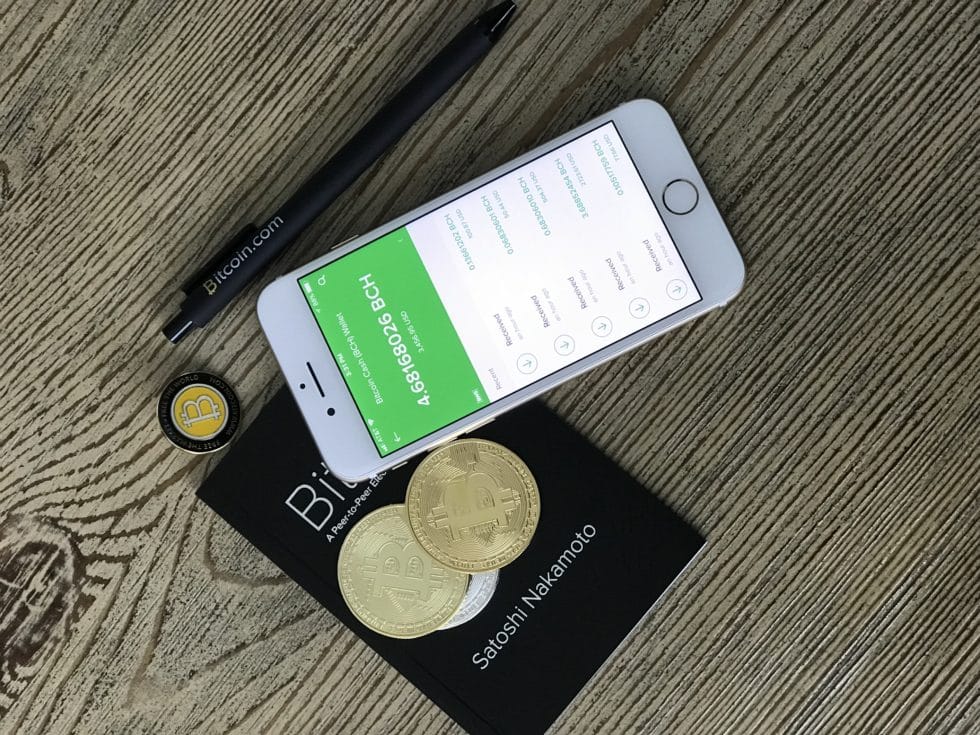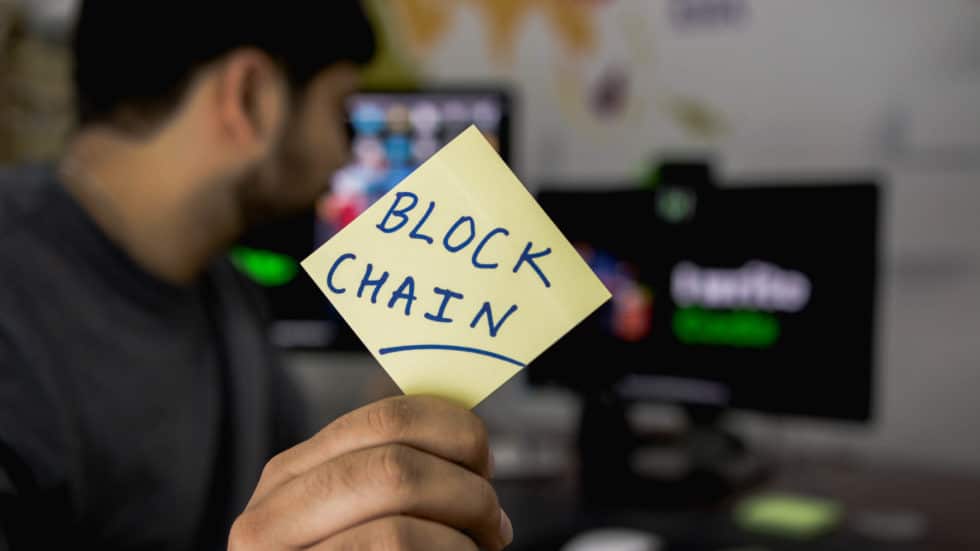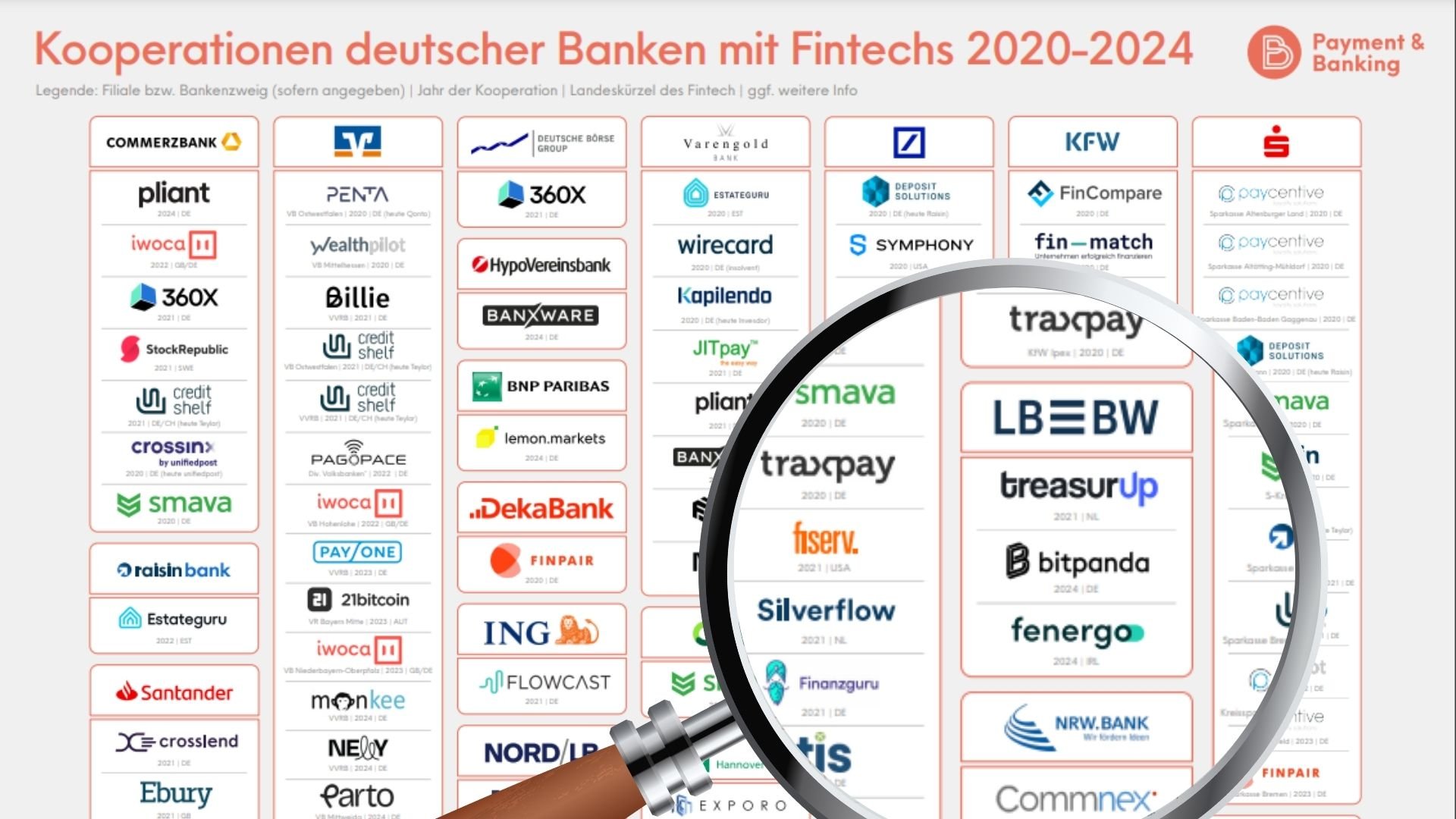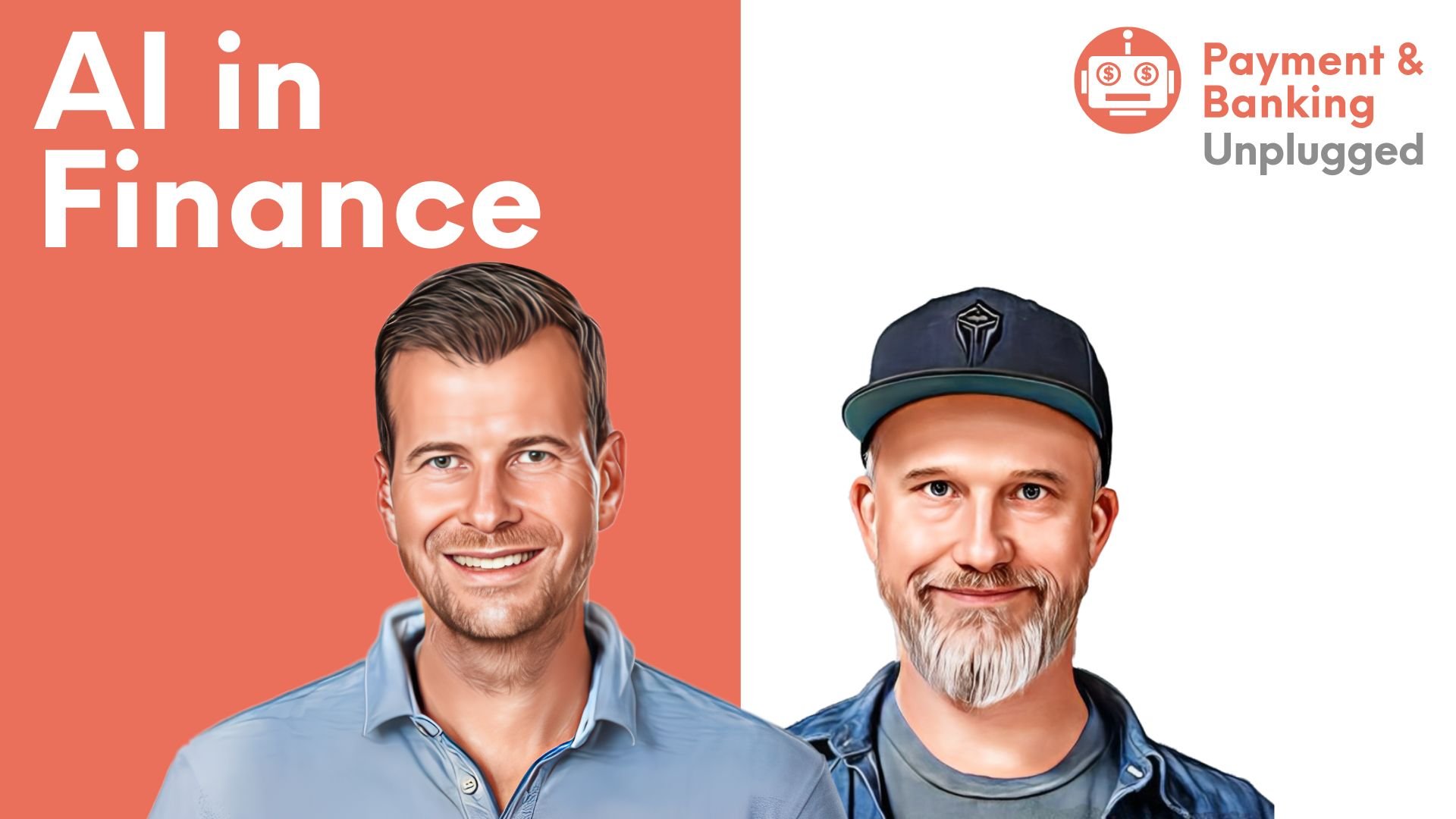Ein Gastbeitrag von Jonathan Knoll
Hatte Bill Gates Recht, als er sagte, dass die Welt Banking braucht, aber keine Banken? Vielleicht. Vielleicht auch nicht. Bis Blockchain-Technologien ihr Versprechen erfüllen, dort zu sein, wo 100 Millionen oder gar Milliarden von Menschen ihnen bei allen Arten von Finanztransaktionen ihr Vertrauen schenken, haben Banken immer noch die Möglichkeit, der „Wertspeicher“ der Wahl zu sein.
Aber wie wir aus den jüngsten Berichten ersehen können, rücken die GAFAs immer schneller in den Blockchain-Bereich vor. Dies könnte dazu beitragen, dass die Technologie endlich den Mainstream erreicht und potenziell 100 Millionen Verbraucher erreicht, gleichzeitig schränkt dies aber auch das Zeitfenster ein, in dem die Banken ihre Rolle herausarbeiten können.
Hier ist meine Sichtweise, wie Blockchain-Technologien die Zukunft von Bankdienstleistungen wie Kredit und Rendite gestalten können.
Die Ära der Tokenized Assets
Nach dem großen Preisanstieg bei Bitcoin und Co. vor etwas mehr als einem Jahr war in der Branche die Rede davon, dass die „Marktkapitalisierung“ aller Krypto-Währungen eines Tages 1 Billion Dollar erreichen könnte und dies würde eine Ära der Krypto-Währung als neue Anlageklasse einleiten.
Meiner Meinung nach legen zu viele Menschen zu viel Wert auf die kryptographische „Marktkapitalisierung“, die nicht wirklich eine echte Marktkapitalisierung im herkömmlichen Sinne ist und sich deutlich vom Eigenkapitalwert einer börsennotierten Gesellschaft unterscheidet. Bisher ist der Preis für Krypto, spekulativ, nachfrageorientiert und nicht wert-oder assetbasiert (mehr davon gleich). Aus diesem Grund haben viele die Zeichen eines sich schnell entwickelnden Raums übersehen; die VC-Investitionen in Blockchain- und Krypto-Projekte haben sich 2018 mehr als verdoppelt, und in den letzten Jahren haben eine große Anzahl von klugen Köpfen ihre Karriere in dieser Branche begonnen. Viele Teams haben auch über mehrere Projekte hinweg echte Fortschritte gemacht. Ich denke, wir werden die Früchte ihrer Arbeit in 2019 sehen.
Wie MIT Technology Review es ausdrückt, soll 2019 „das Jahr sein, in dem die Blockchain-Technologie endlich normal wird“.
Eine der Bereiche, in denen wir meiner Meinung nach die größten Fortschritten erzielen werden, ist die Tokenisierung von Assets. Dies wird nur eine logische Folge der allgegenwärtigen Digitalisierung sein. Wie viele in der Vergangenheit bemerkt haben, wird alles, was tokenisiert werden kann, tokenisiert. Dieser aufstrebende Markt ist einer der Bereiche, in denen Blockchain einen echten, handfesten Mehrwert liefern kann, indem diese die Kosten senkt und Komplexität reduziert, sowie neue Geschäftsmodelle erschließen.
Ich bewerte dies neben dem globalen Geldtransfer und dem Supply Chain Management als frühen Gewinner für Blockchain-Technologien.
10 Jahre nachdem Satoshi Nakamoto uns mit Bitcoin und Blockchain ausgestattet hat, wird die nächste Weller der Innovation die Tokenisierung jedes Assets sein – liquid und illiquid. Es wird erwartet, dass dieser Markt in weniger als 10 Jahren von heutigen 300 Milliarden Dollar auf bis zu 24 Billionen Dollar wachsen wird.
Der neuste World Wealth Report, der 2018 von Capgemini veröffentlicht wurde, hebt vor, dass durchschnittlich 9,4% des globalen Vermögens von High Net Worth Individuals (d.h. 6,58 Billionen US-Dollar) in „alternativen Anlagen“ investiert sind, zu denen auch Kryptowährung gehören würden. Was einst nur den Reichen zur Verfügung stand, wird bald für alle zugänglich sein.
Es macht Spaß, sich vorzustellen, was dies für die Fintech-Industrie bedeuten könnte. Dies wirft eine Reihe von sehr interessanten Fragen auf:
- Brauchen wir dank intelligenter Vertragstechnologie auf der Blockchain in Zukunft wirklich zentralisierte Vermittler, die ihre Gebühren übernehmen und als unsere vertrauenswürdige Depotbank fungieren?
- Könnten Security Token Offerings der neue Weg zur Kapitalbeschaffung sein? Der Eigentümer eines millionenschweren Start-ups, der aber immer noch von einem Start-up-Lohn lebt, oder ein etablierter Kleinbetrieb, der es sich nicht leisten kann, durch einen Börsengang Finanzielle Mittel aufzubringen, könnte von dieser Entwicklung profitieren.
- Und was würde es für Sie bedeuten, wenn Sie auf das Eigenkapital in Ihrem Haus oder Ihrer Wohnung im Wert von Hunderttausenden von Euro zugreifen könnten?
Vorteile der Tokenisierung von Assets
Die Vorteile von tokenisierten Assets sind gut dokumentiert und beinhalten einige offensichtliche Vorteile wie reibungslose und kostengünstige Eigentumsübertragung und 24/7 globalen Handel mit sofortiger Ausführung. Schon heute können wir Krypto um 2 Uhr morgens an einem Sonntag handeln. Darüber hinaus gibt es einige weniger offensichtliche, aber kritische Vorteile wie:

- Bruchteilseigentum: Das ist in meinem Kopf riesig. Mehrere Unternehmen haben bereits den Anteilsbesitz von Aktien untersucht (z.B. Stockpile.com). Und jetzt haben wir echte Use-Cases dafür, wie man mit Token z.B. nur ein kleines Stück eines millionenschweren Andy Warhol-Gemäldes für nur 17.000 Dollar kaufen kann (das geschah tatsächlich im September letzten Jahres in Singapur!)
oder den Verkauf von tokenisierten Aktien in einem Luxushotel in Aspen, Colorado.
- Freisetzung von Liquidität aus illiquiden Vermögenswerten: Und dieser Bruchteil des Eigentums wird die dringend benötigte Liquidität fördern. Sobald Sekundärmärkte entstehen, werden wir in der Lage sein, unser Bruchteilseigentum an unserem Lieblingskunstwerk oder einer Wohnung in New York oder die Investition in ein Start-up sofort zu handeln, was zu mehr Liquidität für diese traditionell illiquiden Anlageklassen führen wird.
- Programmierbare Assets: Dank immer intelligenterer Verträge werden diese selbstausführenden Wertpapiere auf Basis von Smart Contracts es ermöglichen, komplexere bedingte Zahlungsstrukturen zu reflektieren und zu automatisieren. Und der vielleicht größte Förderer davon könnten die Regulierungsbehörden sein, die bestimmte Anforderungen in den Vertrag einbauen können.
In der Volatilität herrschend
Volatilität (nach oben oder unten) ist der Freund des Spekulanten, aber ein großes Hindernis bei der vollständigen Etablierung von Token als neue Anlageklasse. 2019 verspricht jedoch das Jahr der „Stabilen Münze“ zu werden.

Neben etablierten Akteuren wie MakerDao, Tether, Circle, Paxos und Gemini wird es interessant sein, die Neueinsteiger in das Ökosystem wie die UP Alliance, Bittrex und insbesondere Facebook zu verfolgen. Mit über 200 Millionen WhatsApp-Nutzern allein in Indien, von denen man hört, dass sie ihren eigenen Stablecoin in einem Überweisungs-Anwendungsfall nutzen werden, hat Facebook die Macht, ein Market Maker zu sein und hilft Token, sich weltweit durchzusetzen. Und als Antwort auf Facebook, könnte ein Amazon-Coin, Google-Coin oder Chase-Coin weit zurückliegen?
All diese Kräfte zusammen mit Token von realen Assets, die an sich stabiler sind, werden dazu beitragen, die Volatilität unter Kontrolle zu halten. Und aus dieser neuen Gegebenheit werden neue Geschäftsmodelle und Möglichkeiten entstehen.
Warum Token Lending und Yield die nächste große Sache sein werden.
Wenn sich die Kryptowährungsmärkte stabilisieren und gleichzeitig ein gutes mittelfristiges Wachstumspotenzial aufweisen, während frühere illiquide Assets tokenisiert werden, könnten wir endlich eine neue Anlageklasse entstehen sehen. Dies wird wahrscheinlich die Türen für institutionelle Anleger öffnen und sollte Hand in Hand mit einer angemessenen Regulierung gehen, um allen das Vertrauen in diese neue Anlageklasse zu vermitteln.
Unter der Annahme, dass dies geschieht, werden einige der neuen Geschäftsmodelle, die an Bedeutung gewinnen werden, Token-Leihe und Renditeprodukte beinhalten. Alle blühenden Märkte benötigen Liquidität und Kredite, um ihr volles Potenzial zu entfalten, und die Nutzung von tokenisierten Assets als Sicherheiten – ob BTC oder ein neuer Real Estate Token – bringt eine Reihe von Vorteilen.
Nehmen wir zum Beispiel die etablierte HELOC (Home Equity Line of Credit). US-Banken bieten HELOC seit Jahrzehnten erfolgreich an und es ist eine der handelsfreundlichsten Kreditkarten, die heutzutage verfügbar sind und dem Verbraucher die besten Preise und Konditionen bieten. Was früher nur einem kleinen Teil der Weltbevölkerung (z.B. Hausbesitzer in den USA) zur Verfügung stand, wird nun für einen viel breiteren Markt zugänglich sein. Und aus Sicht einer Bank denken Sie darüber nach, wie viel einfacher es in Zukunft sein wird, diesen besicherten Assets zu verkaufen, wenn jemand mit seinem Kredit in Verzug gerät. Und mit zunehmendem Token-Besitz wird sich der Zugang zu erschwinglichen Krediten drastisch erhöhen. Da es sich hierbei wirklich um ein Asset-Backed-Darlehen handelt, bedeutet die Nutzung Ihres Tokens als Sicherheit, dass Sie die besten verfügbaren Kreditzinsen erhalten und Ihre alte Position beibehalten können, da Sie Ihre Assets nicht verkaufen müssen. Darüber hinaus lösen Sie kein Steuerereignis aus und verschieben damit die Kapitalertragsteuer

Die Zukunft der Bankdienstleistungen?
Wenn Sie Zugang zum Internet haben, haben Sie Zugang zu Bitcoin (oder einem anderen tokenisierten Asset). Und jetzt auch Zugang zu besicherten Kredit- und Renditeprodukten. Dies ist zwingend für diejenigen in entwickelten Ländern wie Deutschland, aber stellen Sie sich vor, was dies für die Milliarden der ganzen Welt bedeutet, die „unbanked“ sind. Um sicher zu sein, brauchen wir immer noch ein ordentliches KYC, um sicherzustellen, dass schlechte Akteure nicht auf diese Plattformen gelangen, aber aus Kreditsicht wird das Schlüsselelement zum zugrunde liegenden Wert der Sicherheiten und nicht zu einem klassischen Kreditscore. Dies gilt insbesondere für Länder, in denen die Kreditwürdigkeit begrenzt ist oder nicht existiert.
„Unbanked“ ist eigentlich nicht der richtige Begriff, den man hier verwenden sollte. Wie ich letztens gehört habe, ist es wie als würde man ein Millennium als „nicht-festgesetzt“ nennen. Diese Kreditkonsumenten von morgen werden nie im herkömmlichen Sinne eine Bank haben, sie werden einfach auf dem Handy Banking betreiben – mit oder ohne Bank!
Das ist es, was mir meine „Kristallkugel“ sagt. Was denkt ihr denn? Ich würde gerne eure Gedanken dazu hören!
Zum Autor
Jonathan Knoll ist Co-Founder und Managing Director der eTonec GmbH.
eTonec verfügt über jahrzehntelange Erfahrung in den Bereichen Zahlungsysteme, Bankwesen und Regulierung und sie nutzen dieses Wissen, um in der aufstrebenden Blockchain & Krypto-Industrie einen echten, greifbaren Mehrwert zu schaffen.
Ursprünglich aus den USA stammend lebt und arbeitet er seit etlichen Jahren in Europa. Neben Stationen in Wien & Berlin lebt er mittlerweile in München.





